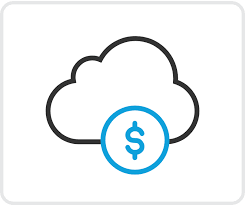Cloud computing has revolutionized how businesses operate, offering unparalleled flexibility through Infrastructure as a Service (IaaS) platforms like AWS, Azure, and Google Cloud. However, the scalability and convenience of the cloud often come with unexpected costs. Without careful management, organizations can overspend on underutilized resources, storage, or inefficient architectures. The key to unlocking savings lies in adopting a proactive approach to cloud cost optimization. Here are actionable strategies to reduce your cloud bill while maintaining performance and innovation.
Analyze and Monitor Resource Utilization
Start by gaining visibility into your cloud environment. Use monitoring services such as AWS CloudWatch or Azure Monitor to track metrics like CPU, memory, and network usage. These tools help identify idle or overprovisioned virtual machines and storage volumes. Many providers also offer cost-management dashboards that highlight spending trends. Pair these insights with automation tools to schedule non-essential workloads during off-peak hours or terminate unused instances. Proactive monitoring ensures you pay only for what you need.
Rightsize Compute and Storage Resources
Resource allocation is a common source of waste. Rightsizing involves matching instance types and storage tiers to actual workload requirements. For example, downgrade an oversized VM if its utilization rarely exceeds 40%, or switch to lower-cost storage for archived data. Tools like AWS Trusted Advisor or Azure Advisor provide rightsizing recommendations. For databases, consider scaling down or adopting managed services that auto-optimize performance. Regularly auditing resources prevents paying for idle capacity.
Leverage Discounted Pricing Models
Cloud providers offer various pricing models tailored to different workloads. Reserved Instances (RIs) and Savings Plans provide steep discounts (up to 72%) for committing to one- or three-year terms, ideal for steady-state applications. Spot Instances, which offer spare compute capacity at up to 90% off on-demand rates, suit fault-tolerant or batch workloads. Additionally, explore sustained-use discounts for long-running VM deployments. Aligning workloads with the right pricing model can dramatically reduce costs.
Implement Auto-Scaling and Serverless Architectures
Auto-scaling dynamically adjusts compute resources based on demand, ensuring you don’t overpay during periods of low traffic. For example, an e-commerce site can scale up during holiday sales and scale down afterward. Pair this with serverless computing platforms like AWS Lambda or Azure Functions, which eliminate VM costs entirely by charging only for execution time. Similarly, containerization with Kubernetes optimizes resource usage by packing workloads efficiently, reducing the need for oversized clusters.
Adopt FinOps for Financial Accountability
FinOps, or cloud financial management, bridges the gap between engineering, finance, and leadership teams. Establish cost visibility through dashboards that break down expenses by department, project, or environment. Set budgeting alerts to flag overspending and enforce accountability. Regular FinOps reviews empower teams to identify inefficiencies, such as unoptimized code or redundant services, fostering a culture of cost-awareness.
Optimize Storage with Lifecycle Policies
Storage costs grow exponentially if outdated data isn’t managed. Implement lifecycle policies to automatically archive infrequently accessed files to low-cost tiers like Amazon S3 Glacier or delete them after a retention period. Use deduplication and compression to reduce storage footprints, and audit databases for redundant tables. For backups, consider incremental snapshots instead of full copies to minimize cloud waste.
Enforce Tagging and Governance Policies
Consistent tagging strategies enable precise cost tracking. Assign labels like “environment: production” or “team: marketing” to resources, simplifying expense allocation. Combine this with governance policies that enforce rules such as mandatory tags, approval workflows for large deployments, or restrictions on premium services. Tools like AWS Organizations or Azure Policy automate compliance, preventing costly configuration drift.
Explore Multi-Cloud and Third-Party Tools
A multi-cloud strategy can mitigate vendor lock-in and leverage competitive discounts. For example, running analytics on Google BigQuery while hosting apps on AWS might yield better commitment discounts. Additionally, third-party tools like CloudHealth or Densify provide cross-platform analytics, identify wasted resources, and automate optimization. These solutions often uncover savings opportunities missed by native tools.
Prioritize Sustainable Practices
Sustainability and cost optimization go hand-in-hand. Shut down unused development environments, switch to energy-efficient regions, or adopt sustainable practices like carbon-aware computing. Providers like Google Cloud offer tools to measure and reduce carbon footprints, which often align with cost-saving measures.
Build a Culture of Continuous Improvement
Cloud cost management is an ongoing effort. Regularly review architectures for inefficiencies, experiment with new services, and educate teams on cost-impacting decisions. Encourage engineers to optimize code for performance, reducing compute needs. By embedding cost-consciousness into workflows, businesses can sustain long-term savings.
In conclusion, reducing cloud costs requires a mix of technical adjustments and organizational alignment. By rightsizing resources, automating scaling, leveraging discounts, and fostering accountability through FinOps, companies can slash bills without compromising innovation. Remember: every dollar saved on cloud waste is a dollar reinvested in growth.

